
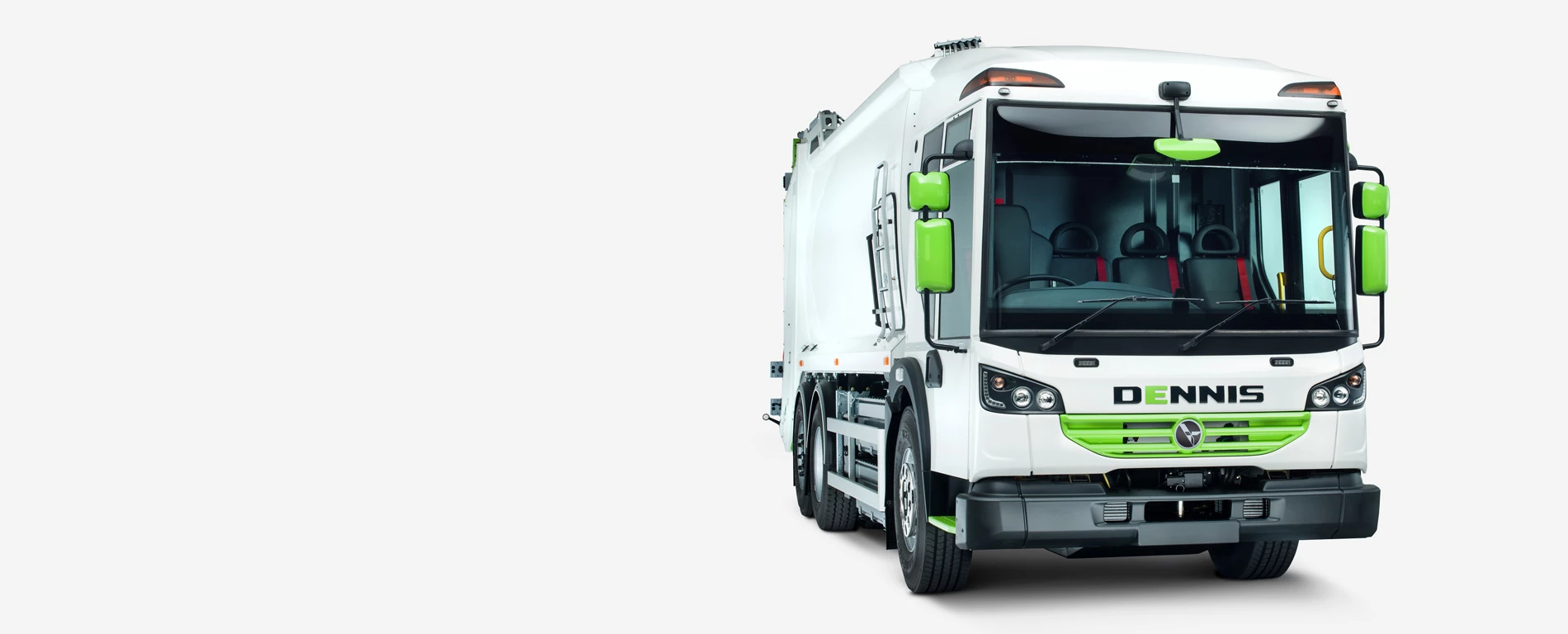


The eCollect is an emissions-free alternative to our most popular conventional RCVs.
This all-electric RCV not only plays a vital role in improving air quality and fighting climate change but is also highly efficient and cost-effective.
It features cutting-edge chassis, body, bin lift and telematics technology. Each component is manufactured by the OEM – Dennis Eagle – and designed to work together for maximum efficiency as an all-electric RCV.
The eCollect is based on our most popular RCV configuration. An Elite Narrow 6x2 rear-steer chassis – with an electric drive system instead of diesel. Our market-leading Olympus OL19 Narrow body and our Terberg 'Omni' range of automatic split lifts.
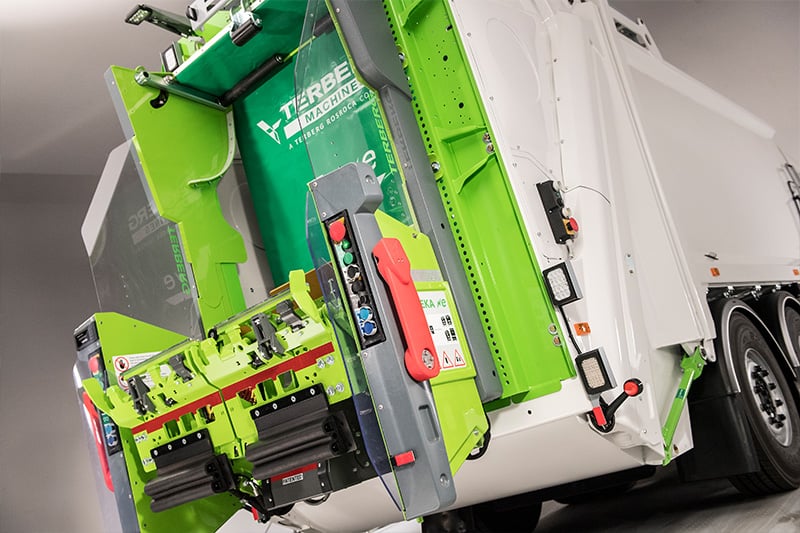
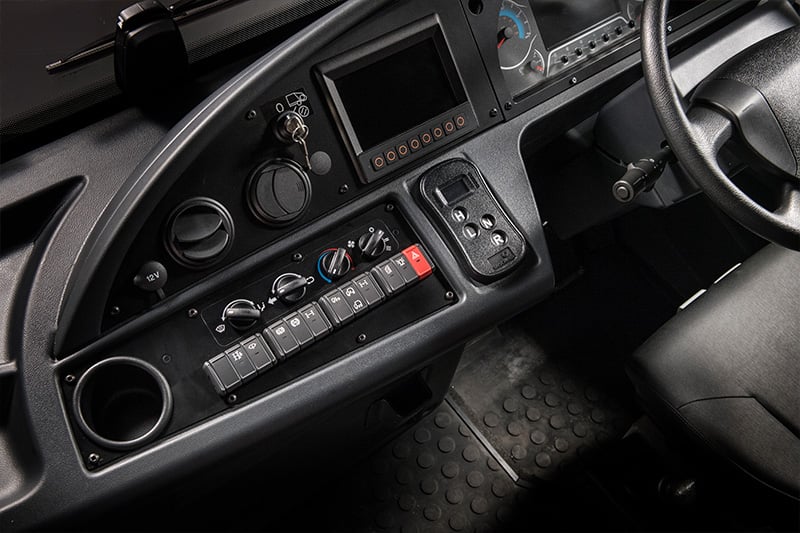


How can eCollect help with environmental challenges?


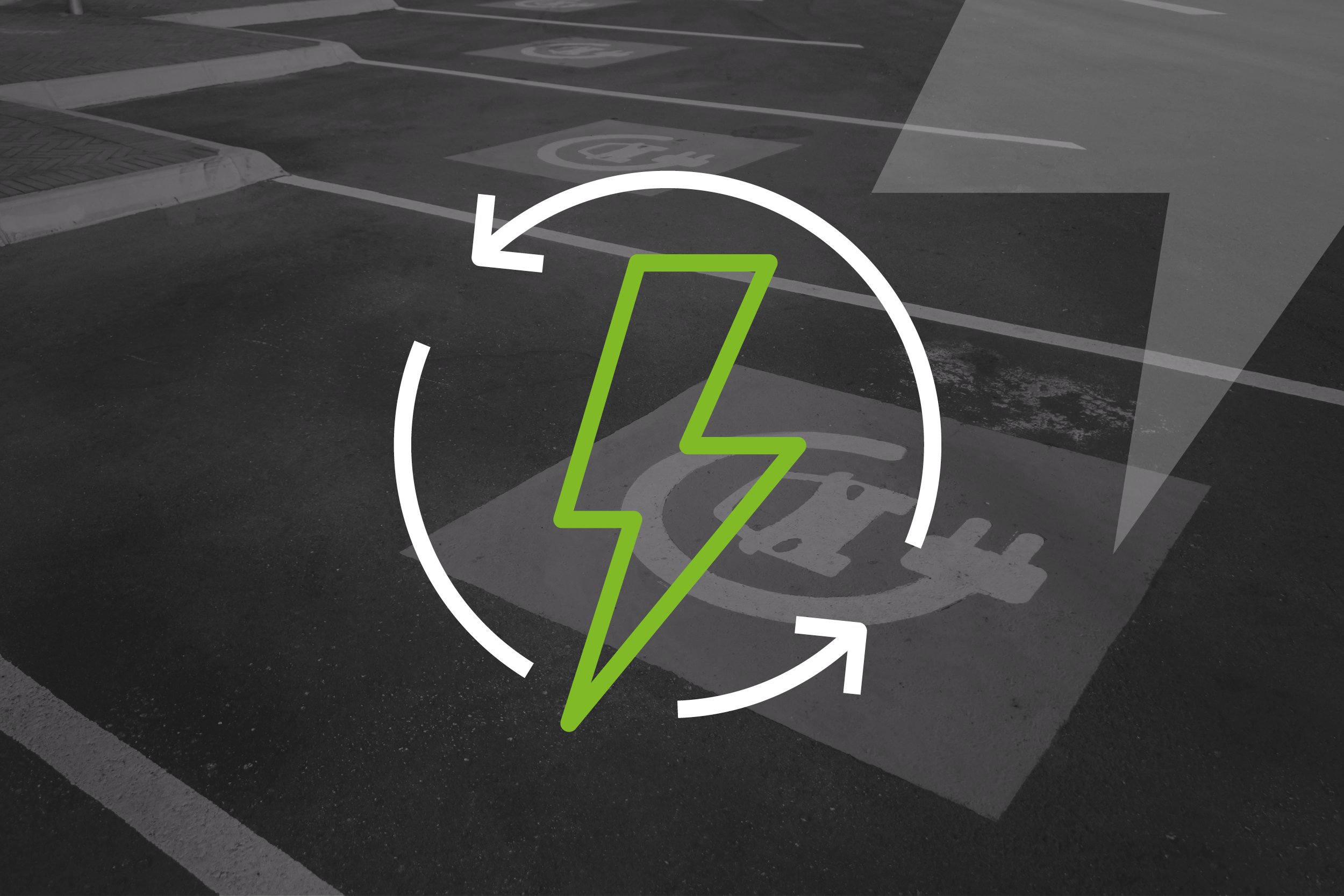
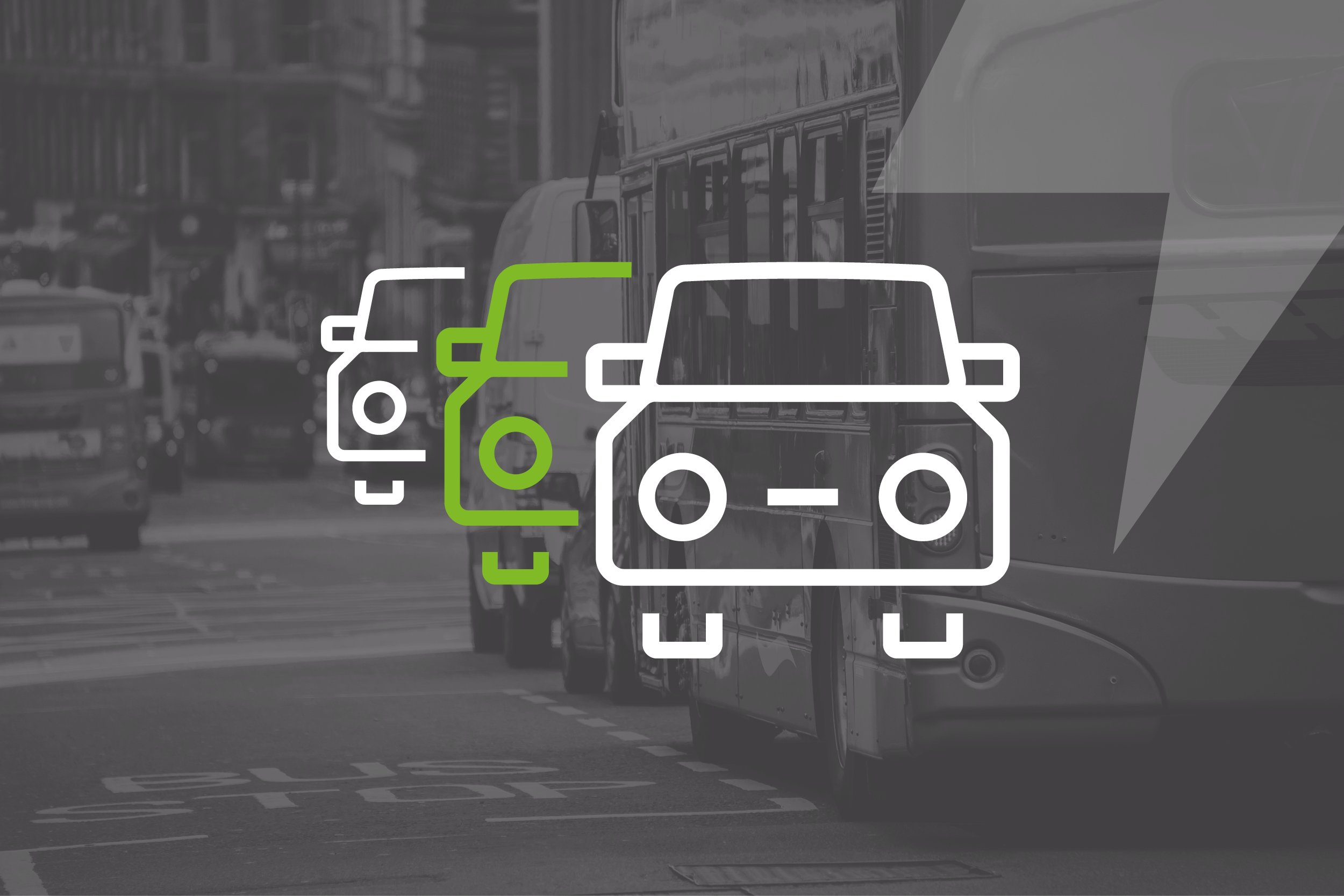

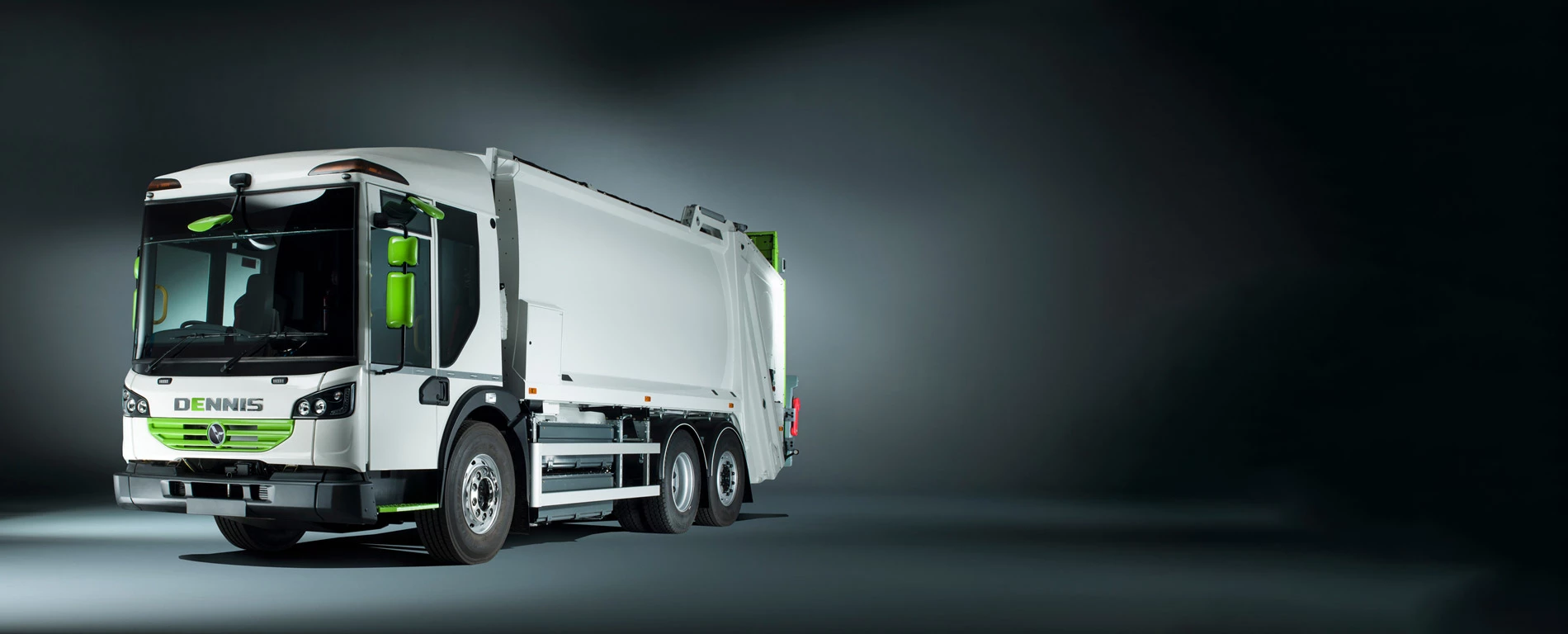
a fully integrated, all-electric eRCV
The eCollect is based on our most popular RCV configuration.
An Elite Narrow 6x2 rear-steer chassis – with an electric drive system instead of diesel. Our market-leading Olympus OL19 Narrow body and our Terberg 'Omni' range of automatic split lifts.
Most important of all, this is the only all-electric RCV produced by an OEM, the complete package built under one roof with no need to involve another manufacturer.
Our chassis, our body, our bin lift, each designed to work together and fully compliant with Whole Vehicle Type Approval (WVTA).
Built by us, trusted by you.
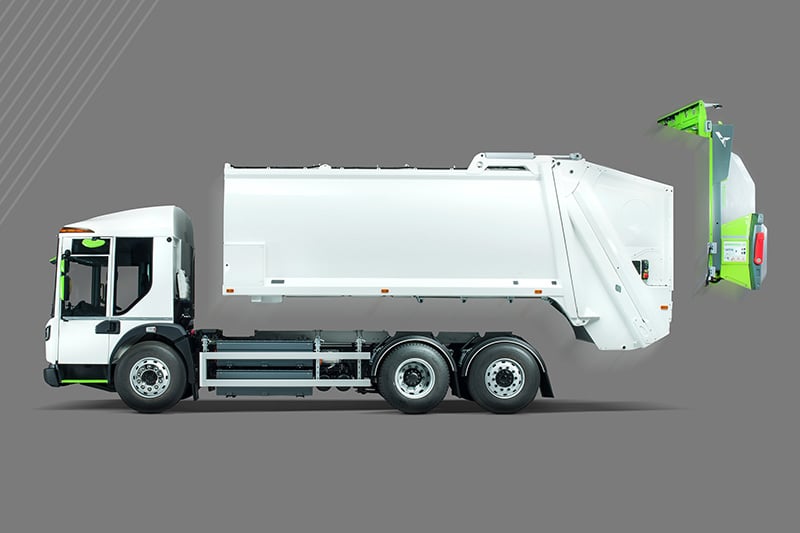
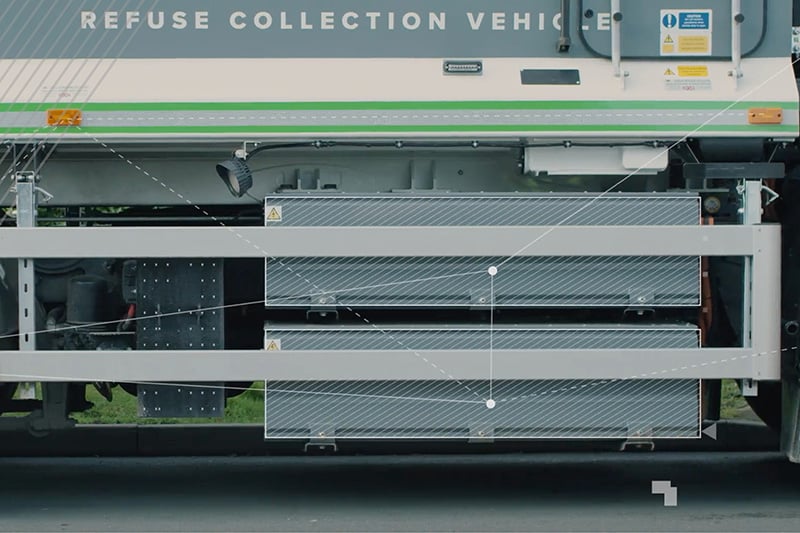
Our aim from the outset of design was for the vehicle to collect 20t of waste on an 8-hour shift before it needed recharging, which has been reflected in our choice of batteries.
Five packs of lithium ion batteries, each with 12 cells to a pack, produce 300kWh of power to drive the 200kW motor. The battery packs are carefully positioned on the chassis under the body for optimum load distribution and payload.
They are designed to last the same amount of time as a typical vehicle’s lifespan – after which we will responsibily recycle them.
Due to the nature of RCVs working patterns, the vehicle will normally be left to fully recharge overnight.
Charging times are very much dependent on how full the battery is upon start of charge, but typically it will take between 6-7 hours to replenish completely. The longer they can be left to charge the better though, as this helps the battery cells balance out more equally.
The level of charge is displayed on the vehicle cluster so the driver always knows how much is left.

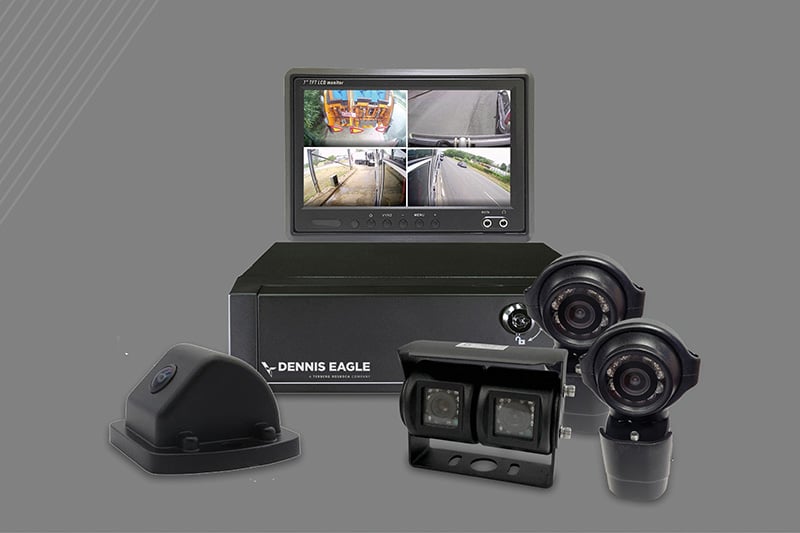
The eCollect, as with all models within our chassis range, has the option of Dennis Eagle's fully integrated 5 camera DVR recording system – the first of our new safety solutions.
Four 720px HD cameras provide a full 360O view on the driver’s crystal clear screen. The nearside view automatically shows when turning left and the rear view when reversing.
The fifth camera covers the work area for additional crew protection. The solid state hard drive stores up to two months’ of footage and features a ‘Crash reconstruction playback’.
Full DE-Connect integration means footage is easily downloaded and provides live video streaming.
This smart vehicle is the most connected RCV on the roads.
The eCollect is factory-fitted with the latest version of our market-leading telematics system DE-Connect.
The software, specifically designed for the waste and recycling industry, has been updated to cover all aspects of the battery packs and electric drivetrain.
This not only provides operators with outstanding operational flexibility but also enables them to manage our eRCVs with exceptional efficiency.
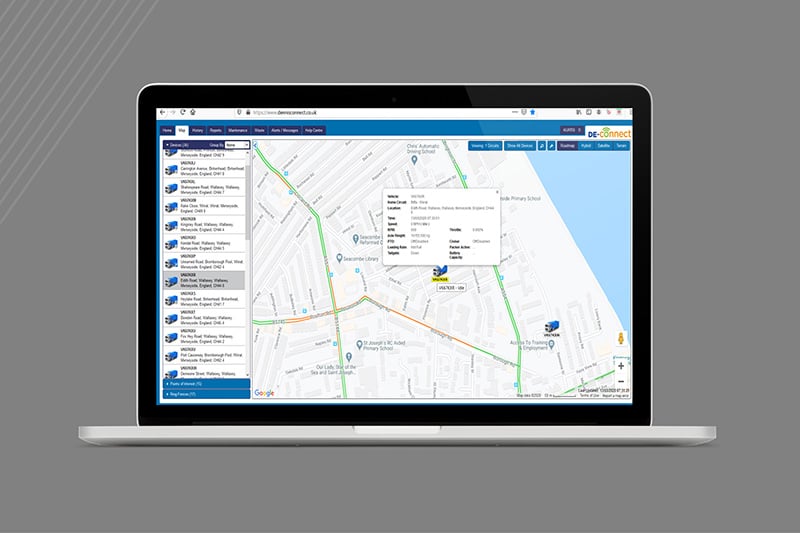



This website aims to introduce you to the eCollect vehicle, why it's needed and the advantages it brings to the environment. You can download our resources which contain both a vehicle overview and detailed specifications.
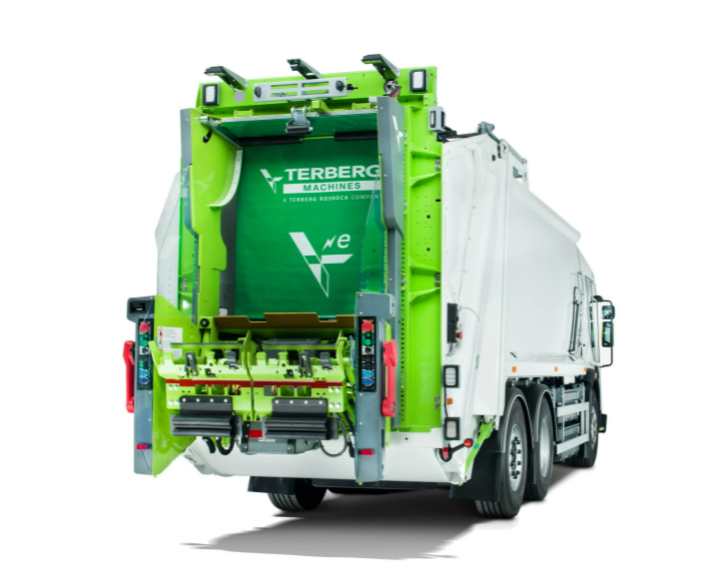

We’ve been talking to our customers about this landmark vehicle. As electric trucks are new to many of them, they have lots of questions. We’ve collected those most frequently asked and answered them here. And if you have a question, just ask: we’ll be delighted to answer.
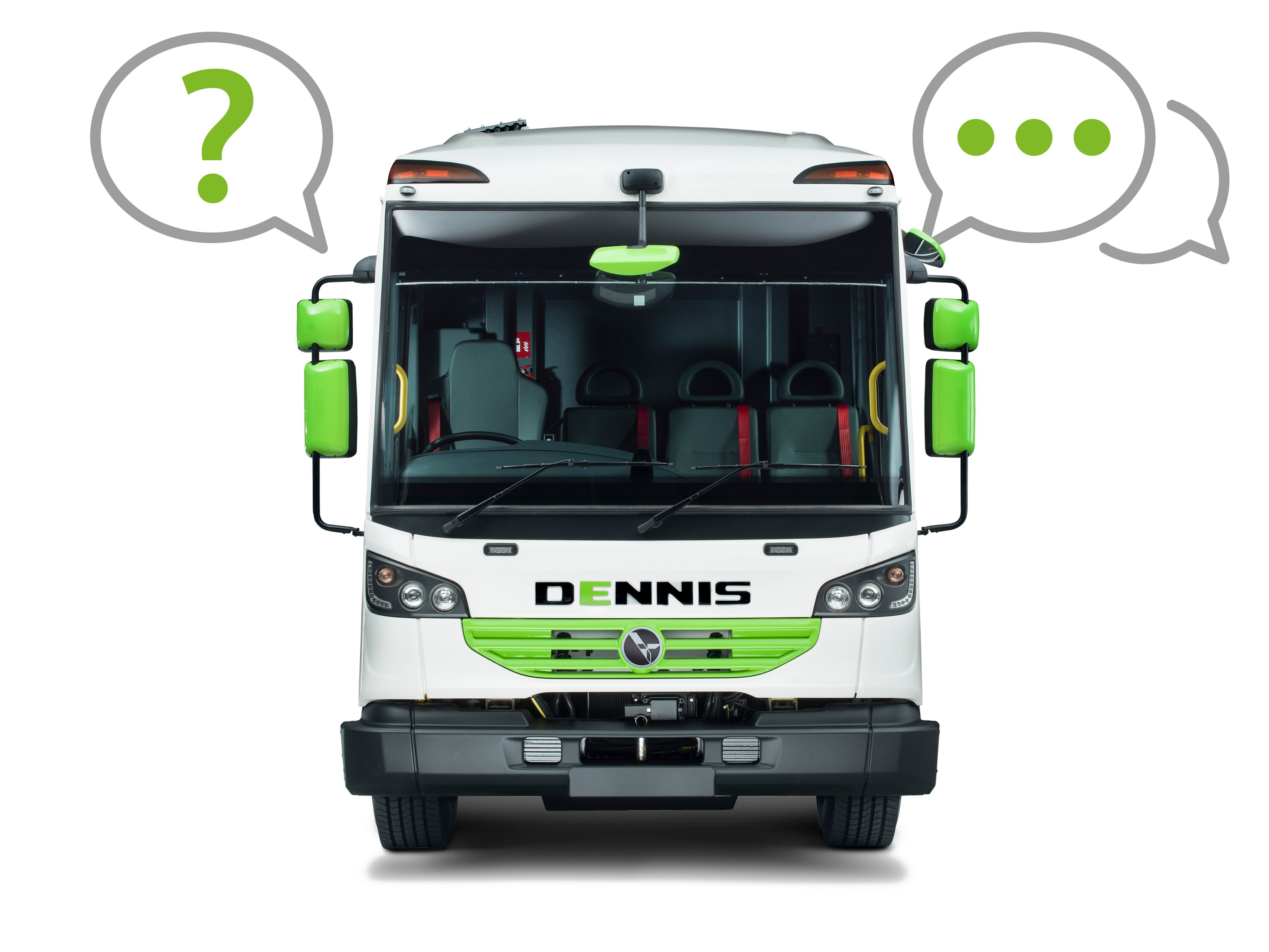
Q. Is the eCollect only available in the UK?
Yes - currently the eCollect is only being offered to customers within the UK. However, we will be working hard to introduce the vehicle to additional markets, and will keep you informed as it becomes available for sale in other countries.
Q. What axle configurations and body sizes will be available for the eCollect?
At the time of the launch, there will only be one vehicle configuration available: 6x2 rear-steer Narrow chassis + Olympus OL19N rear-loading body + Terberg automatic split bin lift. Other configurations and sizes will become available in due course.
Q. What is the battery type and rating used by the eCollect?
The eCollect uses Li-NCM battery packs with a combined capacity of 300kWh.
Q. Does the vehicle have on-board charger fitted?
No, we do not currently offer this option as it’s more economical and efficient to use offboard charging.
Q. What impact does the weather have on battery performance?
The batteries are not significantly affected by ambient temperature in the range of weather conditions we typically observe in the UK. They have also been successfully tested in hot and cold chambers beyond the range of temperatures we’d expect to encounter in the UK.
Q. How will using the heater or air conditioning affect performance?
Heating or air-conditioning, at full power, uses approximately 5kW per hour when in use. If used continuously on an eight-hour shift, which is unlikely, this would use 40kWh or 15% of battery capacity
Q. What bin lift options will the eCollect have?
At the time of the launch the only bin lifts available will be from the market-leading Terberg ‘Omni’ automatic split-lift range.
Q. Are the batteries leased or purchased?
The batteries will be purchased.
Q. Does an electric RCV require specialist tyres?
No. Tyres and wheels will be the same as those used on similar diesel vehicles.
Q. Can third party equipment, such as cameras, be fitted to the eCollect?
EMC approved third-party equipment can be added but a detailed engineering investigation will first need to ensure excessive power will not be consumed by any third-party equipment. Dennis Eagle own brand Safety Solutions range are already tested for use.
Q. Will the driver have a range indicator and what range can be expected from the eCollect?
The driver will have a visual indication showing how much charge is left in the battery – the ‘State of Charge’ indicator – not the range.
Range depends upon the operational environment (as it does in a diesel vehicle), for instance, whether the route is hilly or flat. Diesel RCVs typically manage between 1.5 and 6mpg but miles per gallon can only relate to diesel RCVs, not eRCVs.
However, in customers’ field trials, the eCollect has worked for eight hours on urban rounds collecting two full loads and travelling to the tip to empty them and still had more than 30% charge left in the battery. And in further trials, double shifts have been completed without needing to recharge the vehicle.
Q. If customers find they are not using the full battery capacity, can one of the packs be taken out to reduce cost and increase the payload?
Not in the initial supply phase. Our tests, based on two collection rounds per day and transit to and from discharge sites, found the vehicle returning with 20-40% of the initial charge remaining, which is a comfortable cushion to enable the vehicle to return to its depot.
Q. Can the batteries be swapped over?
The five battery packs are standard modular components, positioned in a standard format, so any of the five could be swapped with another or replaced by new batteries of the same format.
But for safety reasons, both of these operations must be carried out by Dennis Eagle’s high-voltage trained engineers with lifting equipment and in a suitable working area that has been approved for safe high-voltage work.
Q. Can the battery packs be safely run down to zero charge?
No. Running the batteries to zero charge risks damaging the cells. There are warnings in place to inhibit this from happening.
Q. How does the driver know when to stop working to recharge the battery?
If the level of charge in the battery packs drops below a set minimum level, a prominent amber “tortoise” warning light on the dashboard comes on. This indicates the vehicle is now operating on the battery packs’ Reserve charge to ensure the vehicle can return to the depot. When the amber light comes on, the driver should proceed directly to recharge the RCV.
Q. Is the eCollect’s speed restricted in the “tortoise mode”?
Not directly. When the charge reaches the Reserve level, it doesn’t directly restrict the eCollect’s speed but it does restrict the electric motor’s torque and current which can result in the vehicle going slower. This is why it is sometimes called the “tortoise mode”.
Q. Will the body and lift still operate in the “tortoise mode”?
Yes, but we strongly recommend that the body and lift are not operated when the charge reaches the Reserve level. However, when the eCollect goes into the tortoise mode it does not stop the electric functions of the body and lifts from working.
Q. Can the driver or operator override the “tortoise mode”?
No, the “tortoise mode” can not be overridden.
Q. Can the battery charge Reserve level be changed?
The Reserve charge level which triggers the “tortoise mode” can not be changed. It is hard-coded into the software.
Q. Do the cells need to be balanced during charging and will operators need to use computers to control charging?
The charger will balance the cells itself. The operator won’t need any further input except to ensure the battery packs are regularly given a prolonged charge to allow full balancing. The longer a vehicle is left on charge, the better the balancing of the individual cells in the battery pack.
Q. Can batteries be topped up when already partly charged?
Yes. The more time the batteries are left to charge, the better.
Q. How long will it take to charge from empty?
With a 50kW rated charger, it will typically take around 7 to 8 hours to recharge the battery packs from around 15% to 100%. And the vehicle does recharge up to around 80% relatively quickly.
However, the time taken will depend on the charger, power supply and any other demands on the current. And we recommend you leave the batteries to charge for longer so the charge across different cells will be better balanced.
Q. What power supplies does the depot need for one and for multiple vehicles?
There are two charger options available to the operator: Mobile or Fixed.
For the Mobile unit, the operator will need an input three-phase, 63 amp (415 volt) industrial supply to the mobile charger and charger needs to output 800V DC, 40kW with a CCS2 connection to the vehicle.
The Fixed unit will be wired into the building’s mains supply but the building will need at least 63 amps available per vehicle and still needs to output 800V DC, 40kW with a CCS2 connection to the vehicle.
Q. What connection plug is to be used?
You’ll need a CCS2 inlet plug connection.
Q. Can batteries be swapped over by the operator?
No, the batteries are fixed and not intended for removal by the operator. Only Dennis Eagle approved personnel can do this.
Q. What is the cost of charging a truck?
The costs of charging the truck will depend on the price you pay for your electricity, but the cost of electricity used on one round will almost certainly be much lower than the cost of diesel used by a conventional vehicle.
Q. Will jump leads from a recovery vehicle get it going enough to unload the refuse from the body and get it back to the depot?
No, this is not possible and if tried would be likely to cause damage to the vehicle and injury to the operator.
Q. What infrastructure will be required at workshops?
There are standard high-voltage equipment requirements which will be advised during HV training. See also Battery Management Questions: What power supplies does the depot need for one and for multiple vehicles?
Q. What additional workshop equipment is required?
Workshops will require additional safety equipment and Dennis Eagle has produced an Electric Vehicle Safety Equipment Kit which can be kept to hand on a display board for immediate and easy access.
Q. How will maintenance costs compare to traditional Diesel RCVs?
Maintenance costs will be comparable to those of a diesel RCV. While there are fewer parts to maintain, specialist electrical system maintenance will be required. Dennis Eagle’s Aftermarket team will be on hand to support you in this.
Q. What is the warranty period on batteries?
The battery packs come with our standard three-year warranty with the option of an extension.
Q. What is the expected life of batteries?
The batteries are designed to have a life expectancy similar to that of the vehicle itself. The eCollect uses Lithium ion batteries which also incorporate Nickel, Manganese and Cobalt (Li-NMC). This not only increases the energy density of the batteries but prolongs their life.
Q. How are batteries disposed of at the end of their life?
It is the responsibility of the manufacturer to dispose of the batteries at the end of their lifecycle so Dennis Eagle will take responsibility for collecting and recycling them.
Q. How will warranty issues be handled?
The warranty procedures will be exactly as they are with our diesel vehicles.
Q. What kind of safety training is required for electric vehicle operators?
The high voltage aspect of electric vehicles means they present a different set of risks from diesel vehicles. So all staff working on or around electric vehicles will need training, depending on what their role is.
At Dennis Eagle, we provide awareness training for all staff so they can recognise an electric vehicle and understand the risks. And all our technicians require HV foundation training before they are allowed to work in any way on the eCollect or any other electric vehicle.
Q. Will drivers and crews require any new or unique training?
In addition to safety training, there will be additional training required by drivers and this will be provided by dedicated trainers in the same way as training for our conventional vehicles is delivered. Crews will also require safety training but will find the operation of the eCollect very similar to Dennis Eagle’s diesel vehicles and training will be provided as usual.
Q. Is there any specific training required for working on the high voltage system within the vehicle?
Yes but it is important to note that, for the foreseeable future, only HV-trained Dennis Eagle engineers will be authorised to work on the high voltage components of the vehicle.
We are also providing HV training for Dennis Eagle staff in each service centre to give us the expertise required to maintain and service all aspects of the eCollect with genuine insight.
This training will also be available for customers.